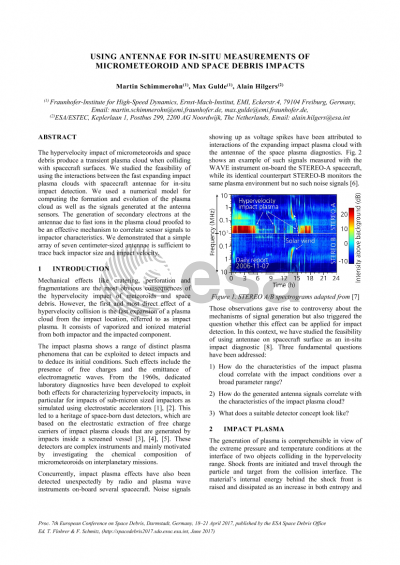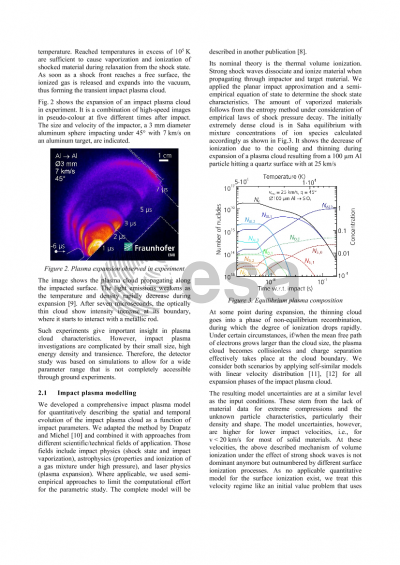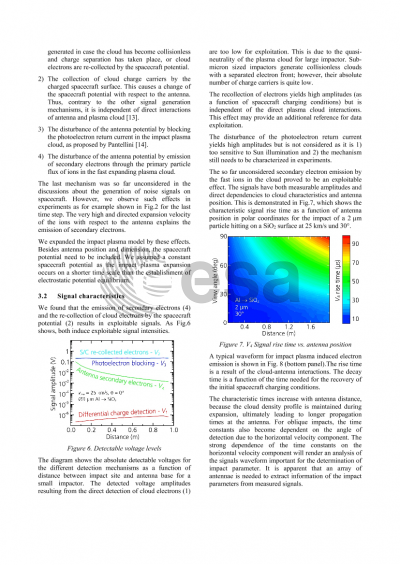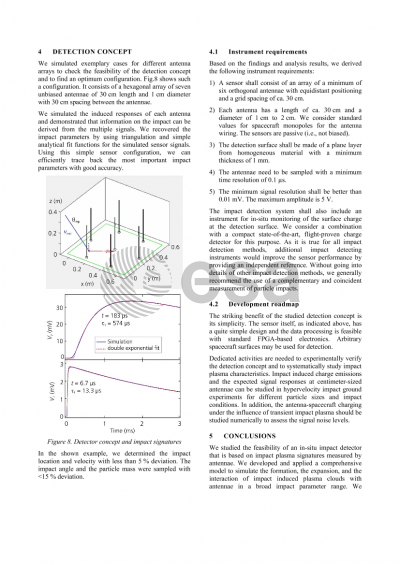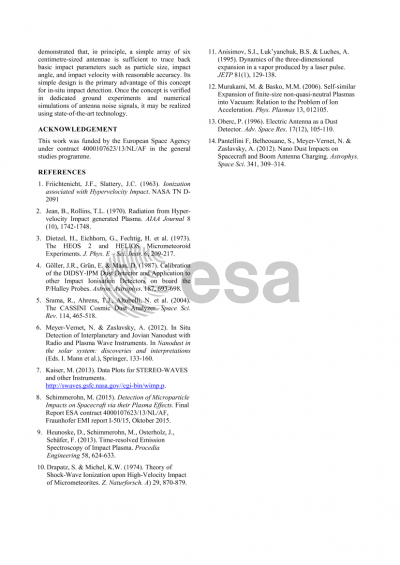Document details
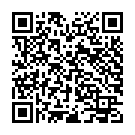
Abstract
The hypervelocity impact of micrometeoroids and space debris produce a highly transient plasma cloud when impacting spacecraft surfaces. The impact plasma cloud shows a range of distinct phenomena that can be used to detect impacts and to deduce impact parameters. Effects accompanying the impact include charge production as well as the generation of electromagnetic waves.. In the 1960s, methods of collecting the free charge carriers of the impact plasma cloud using electrostatic fields have been developed and hence led to a long heritage of impact plasma detectors. These detectors are complex instruments and mainly motivated by investigating the chemical composition of micrometeoroids in the interplanetary space. In addition, impact plasma effects have also been detected unexpectedly by radio and plasma wave instruments onboard several spacecraft. Interactions of the expanding impact plasma cloud with the antennae of the space plasma diagnostics are believed to be responsible for the noise signals showing up as voltage spikes in the measured signals.
We report the results of an ESA-funded study, in which we investigated the feasibility of using the interactions of impact plasma clouds with spacecraft antennae for in-situ detection of hypervelocity impacts. The study is based on simulations using a comprehensive impact plasma model which allows for computing the plasma cloud formation and evolution. We employ a plasma model to analyze the characteristics of the impact-generated plasma at the antenna as a function of parameters of both impact and antenna. All recently discussed mechanisms of antenna signal generation by plasma cloud interaction, i.e. the disturbance of the electrostatic potential of antenna or spacecraft as well as a disturbance of the charge equilibrium through the blocking of the electron return current are included. In addition, we also incorporated the currently unconsidered emission of secondary electrons due to the fast plasma ions. This mechanism turned out to be the most promising mechanism for detection, as it allows to directly measure the expansion state of the cloud. As a result of the study, we demonstrated that, in principle, a simple array of six centimeter-sized antennae is sufficient to trace back basic impact parameters such as particle size, impact angle, and velocity with reasonable accuracy. Its simple design is the primary advantage of this concept for in-situ impact detection.
Preview
